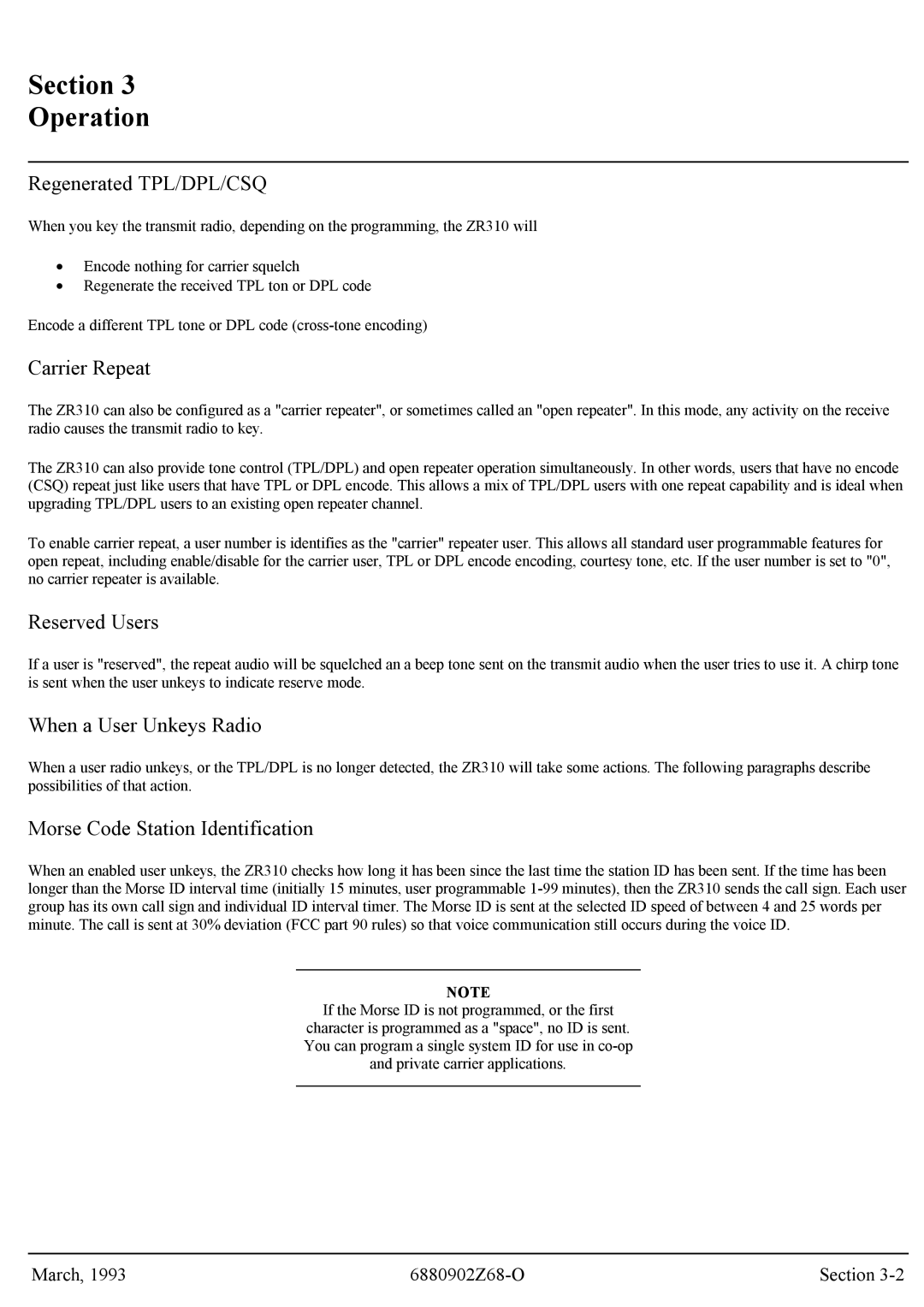
Section 3
Operation
Regenerated TPL/DPL/CSQ
When you key the transmit radio, depending on the programming, the ZR310 will
•Encode nothing for carrier squelch
•Regenerate the received TPL ton or DPL code
Encode a different TPL tone or DPL code
Carrier Repeat
The ZR310 can also be configured as a "carrier repeater", or sometimes called an "open repeater". In this mode, any activity on the receive radio causes the transmit radio to key.
The ZR310 can also provide tone control (TPL/DPL) and open repeater operation simultaneously. In other words, users that have no encode (CSQ) repeat just like users that have TPL or DPL encode. This allows a mix of TPL/DPL users with one repeat capability and is ideal when upgrading TPL/DPL users to an existing open repeater channel.
To enable carrier repeat, a user number is identifies as the "carrier" repeater user. This allows all standard user programmable features for open repeat, including enable/disable for the carrier user, TPL or DPL encode encoding, courtesy tone, etc. If the user number is set to "0", no carrier repeater is available.
Reserved Users
If a user is "reserved", the repeat audio will be squelched an a beep tone sent on the transmit audio when the user tries to use it. A chirp tone is sent when the user unkeys to indicate reserve mode.
When a User Unkeys Radio
When a user radio unkeys, or the TPL/DPL is no longer detected, the ZR310 will take some actions. The following paragraphs describe possibilities of that action.
Morse Code Station Identification
When an enabled user unkeys, the ZR310 checks how long it has been since the last time the station ID has been sent. If the time has been longer than the Morse ID interval time (initially 15 minutes, user programmable
NOTE
If the Morse ID is not programmed, or the first
character is programmed as a "space", no ID is sent. You can program a single system ID for use in
March, 1993 | Section |
